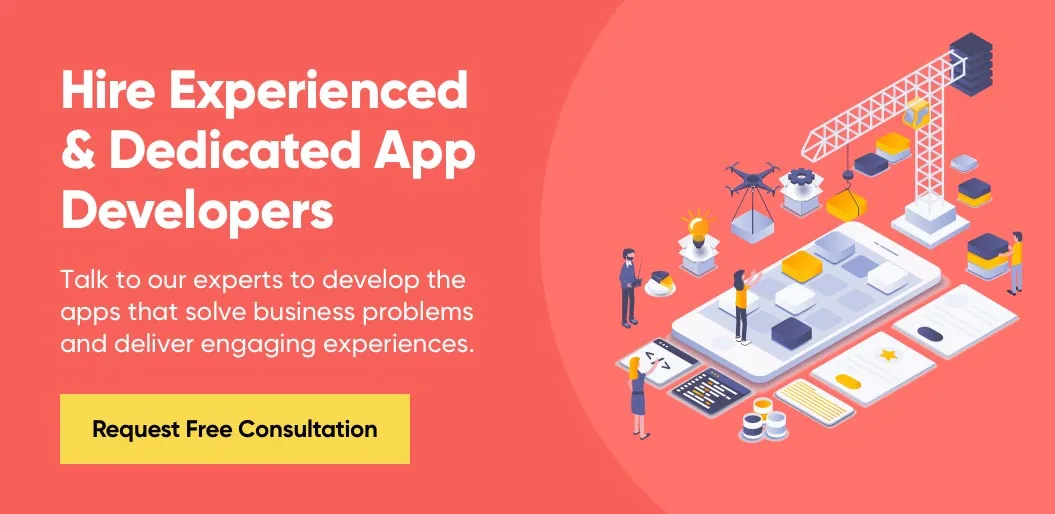Did you know the iOS store only launched in 2008? At the time, it had around 500 apps. By 2020, you could choose from more than 1.8 million apps for iOS. And the Google Play Store, which launched after Apple’s, has been even more prolific. Users in 2020 could choose from more than 2.5 million Android apps.
People are definitely availing themselves of these products all the time. In the second quarter of 2020 alone, there were an estimated 37.8 billion app downloads across iOS and Android stores. People download apps for all kinds of reasons, including entertainment and gaming, supporting personal or business productivity, attending to wellness and health, socializing with others, and making it easier to complete functions such as editing pictures or watching videos.
With consumers and B2B users spending more mobile time on apps, developing your own app can be a good business decision. Apps let you market more effectively to potential customers, provide better customer experiences, streamline business processes and support remote workforces or connections. All of that can drive positive benefits for your bottom line.
But you don’t get any of those benefits if you’re not attracting and retaining mobile app users. Here are some mobile app development tips to help with acquisition and retention.
Also, check out our mobile app development checklist if you’re wondering how to make an app that entices, engages, acquires, and retains users.
1. Solve a Customer-Facing or Business Problem

The best way to get people to download and stick with an app is to provide something they need or want. Before you start with Mobile App Development, do some market research to answer questions such as
- What problems are your customers, clients or employees dealing with that an app might solve?
- What do your potential end-users need and want most in an app product?
- How can an app that solves a customer or client problem help you reach your business goals?
When you’re clear about the real why behind your app, it’s easier to ensure you’re developing a strong solution for your customers. It’s also easier to communicate what that solution is and how it can help them — an important aspect of marketing any product. That can drive conversions on app advertising and help ensure people who find your product in the app store are more likely to download it.
2. Create Feelings of Exclusivity So People Want In
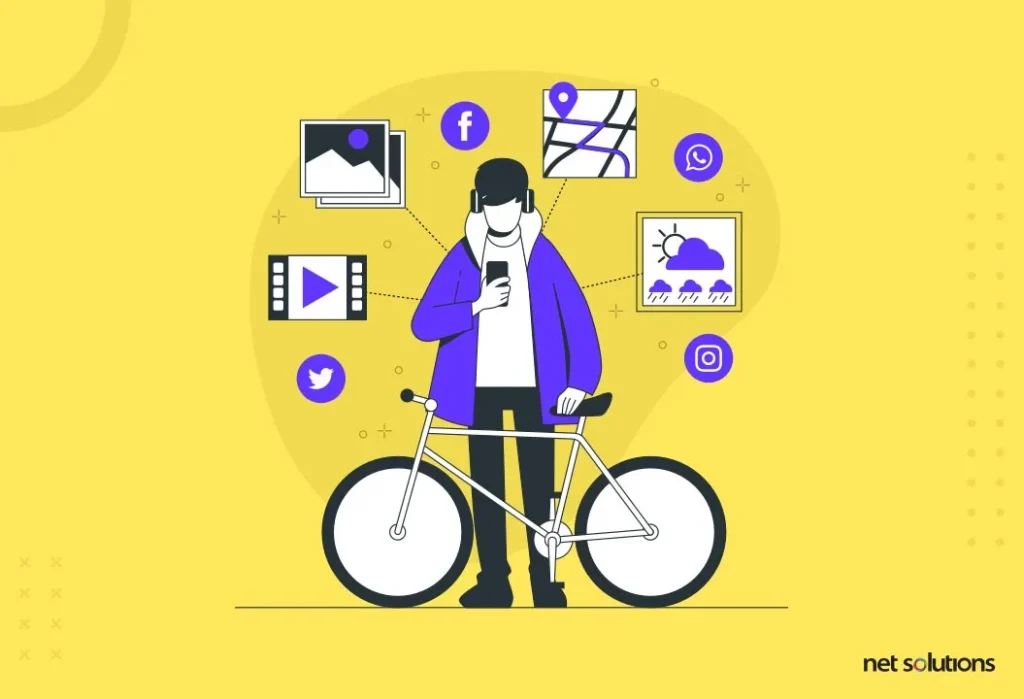
While you want to be careful not to alienate your audience, creating some anticipation about your app product can help drive up acquisitions. This works better with consumer-facing products, though. If you’re building an app for use by business partners and employees, you obviously want to get it in the hands of users as quickly as possible to drive efficiencies within your organization.
With consumer-facing apps, though, exclusivity can help drive a fad mentality that increases app downloads. You can create this environment in a few ways:
- Make the app available to a small selection of beta users at first. Encourage them to talk up the app and build excitement for it. When you open up downloads to everyone, you may get a rush of people interested to see what all the hype was about.
- Build referral options into your app. You might make it where people have to be invited by others to sign up for some or all functionality within the app. Or, you might offer rewards to existing users who bring on new people.
- Offer the app as a customer loyalty reward. This one doesn’t drive as many acquisitions, but it can help you retain users. Loyal customers who see the app as a perk of supporting your business are more likely to use the app regularly than random people who download it in the app store on a whim.
One great example of this type of method to driving acquisitions is the app Clubhouse. The drop-in audio chat app was one of the most talked-about iOS apps of early 2020, due in part to the exclusive nature. It was only available on iOS and you had to get invited by a current user to join.
3. Use Freemium Models to Get People in the Door
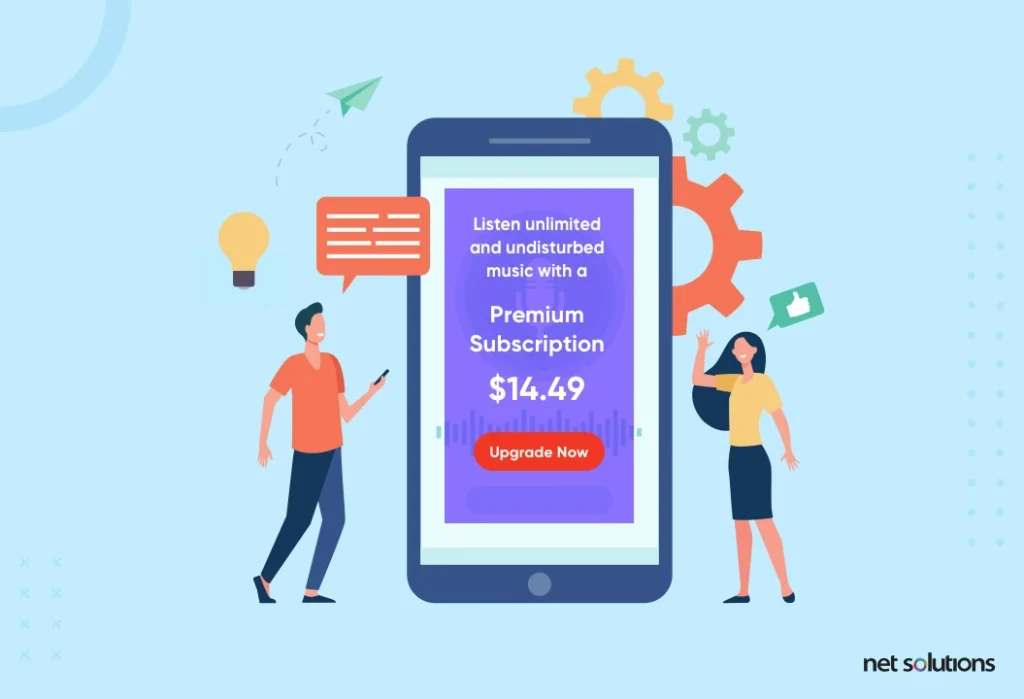
If you’re building a paid app, consider developing a freemium model to get people to try your product. Freemium models typically provide limited functionality or ad-based options for using the app. The key is to develop the mobile app so that the free option gives just enough great functionality and experience that people want to pay for the full option.
4. Build Cross Promotion into Other Apps if Possible
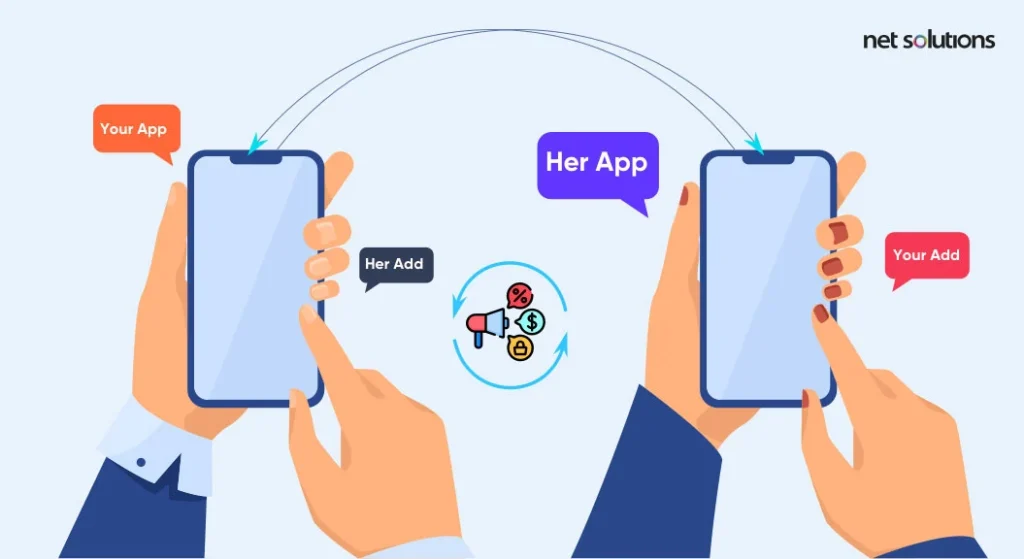
If you’re building a paid app, consider developing a freemium model to get people to try your product. Freemium models typically provide limited functionality with the in-app purchase option for using the full app. The key is to develop the mobile app so that the free option gives just enough great functionality and experience that people want to pay for the full option.
5. Use Strong App Store Optimization
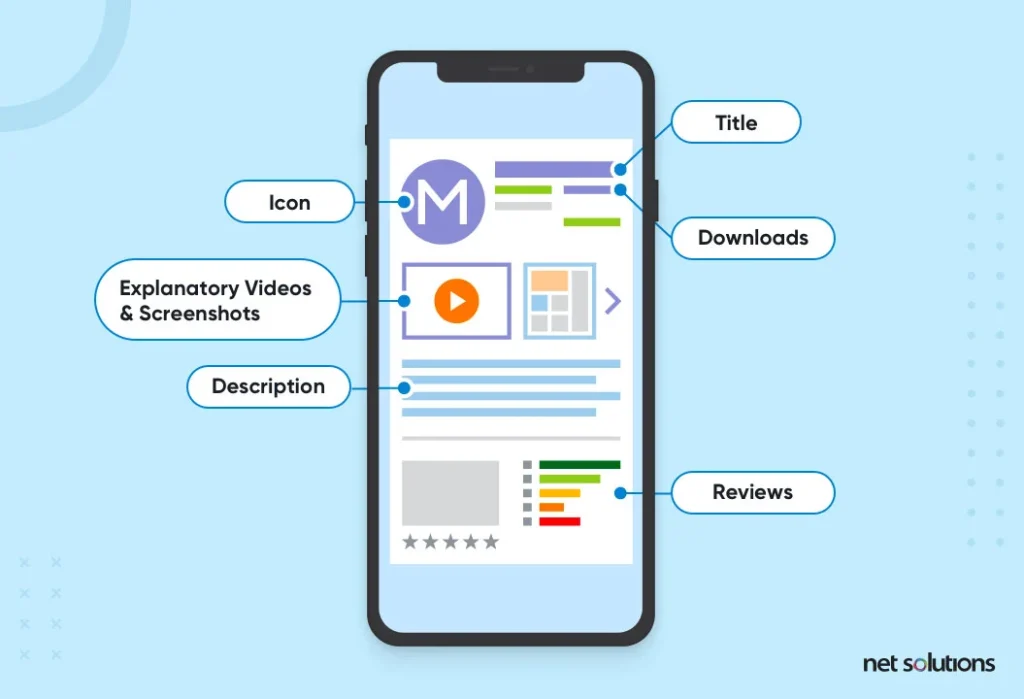
Ensuring users can find your app to begin with is critical
to driving strong acquisitions. Use strong app store optimization so your products show up high in the store search results when people
use relevant keywords. Good ASO also addresses other factors of your listing in the app
stores. When you work with Net Solutions for mobile app dev, you get professional help
optimizing your app store listing.
6. Design Great User Experiences
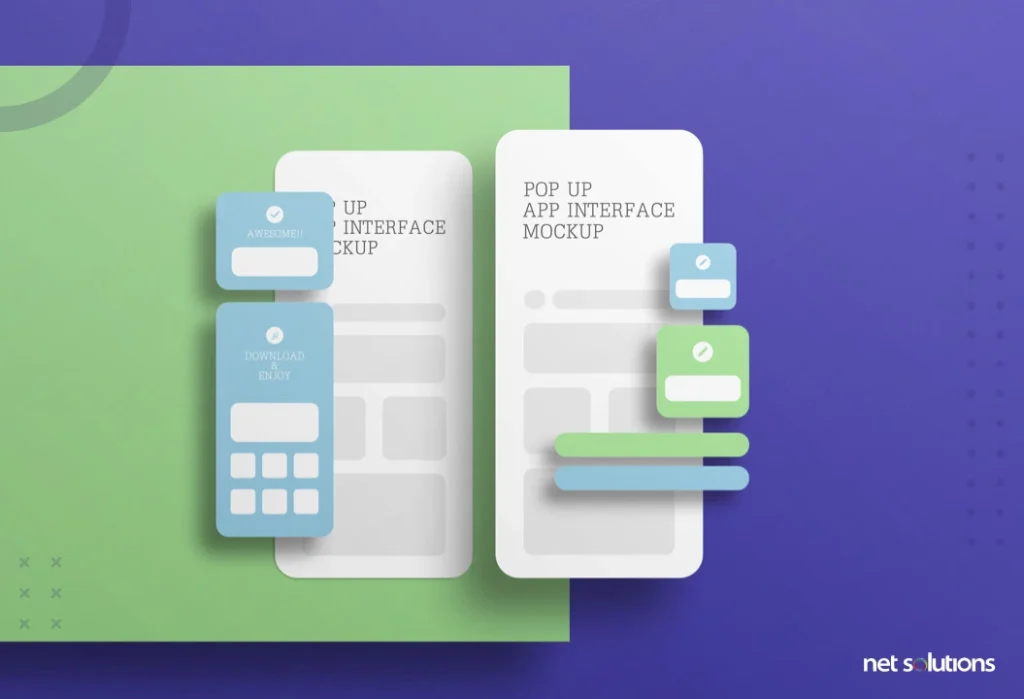
Once you do all the work to get people to download your app,
you want them to stick around. One of the biggest keys to retaining app users and customers
is providing a stellar mobile app user experience. That includes, but isn’t limited to:
- Ensuring the app provides a pleasant visual experience. UX design
should take into account factors such as colors, backgrounds, font sizes, accessibility
and the ease of navigating the app. - Creating easy-to-use functions. Build in tutorials to help people
quickly learn to use the app and ensure menus and other navigation elements are
intuitive. - Following the platform guidelines. While mobile-first design should be your focus, you can’t fly in the face of iOS or Android requirements and expect users to have a good experience with your app. Ensure your solutions conform to operating system-specific requirements so all elements are more likely to work well on the platform in question.
- Focusing on your target audience. Remember that your app has
customer-facing and business goals, so ensure that design is in line with that. If
you’re targeting advanced mobile gamers, your app interface is likely to look and feel
very different than if you’re targeting business users who desire efficiency tools.
7. Test All Functionality Well
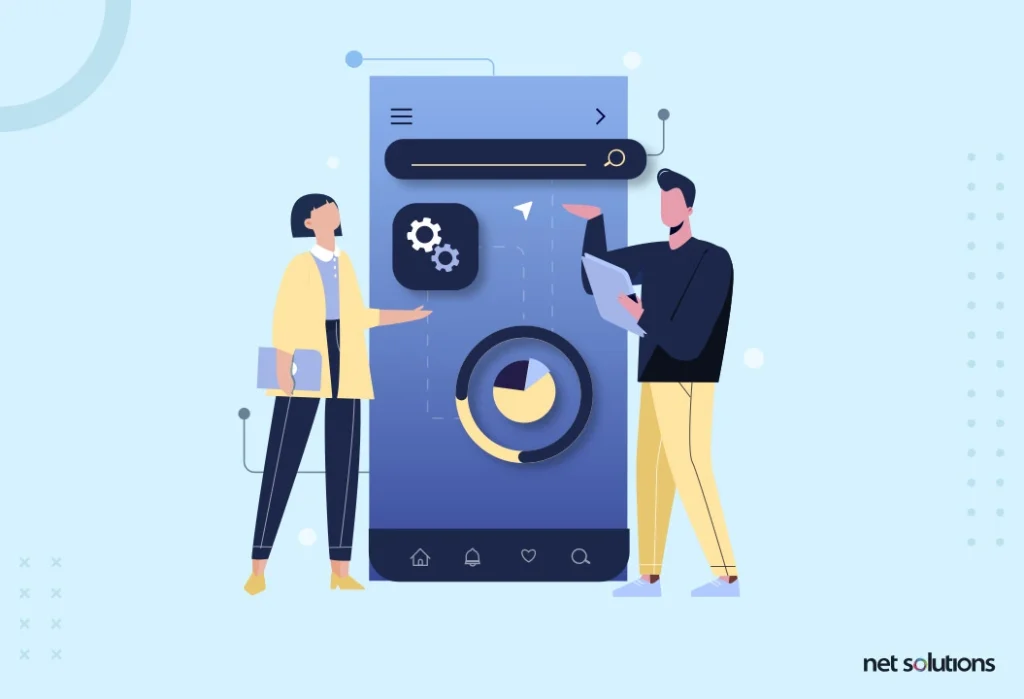
Test during dev and after. Before you launch the app into the store, have end-users test all functionality too, including:
- Links and menus. Make sure every click, tap or swipe leads to the right place.
- Forms and interactive elements. Ensure people can easily enter information and interact with elements in expected ways.
- CTAs. Definitely check that your CTA buttons work seamlessly, whether it’s a tap to find out more, swipe to download or click to call.
Taking time to develop quality mobile apps that solve business or personal challenges can help you drive the success of your mobile app. And working with a mobile app development company like Net Solutions can drastically increase your chances of success. Find out more about how we can help you develop mobile apps that work hard for your business by contacting us today.
SHARE THIS POST
Table of Contents
Related Resources
- What is App Store Optimization (ASO)? The in-depth guide for 2024
- The Mobile App Architecture Guide for 2024
- 7-Step Mobile App Development Checklist (Free Download)
- How Much Does it Cost to Build an App [A Complete Breakdown]
- How To Protect Data In Mobile & Web Apps Using Encryption
- eCommerce Mobile App Development: A Step-by-Step Guide
- 7-Step Mobile App Development Checklist (Free Download)
- How Firebase is Emerging as an Innovation in App Development
- A Complete Guide to Implementing In-App Purchases
- Low-Cost Mobile App Development: A Comprehensive Guide
- How to Make an App in 2024: 5 Stages of Mobile App Development
- What is Mobile-first Design (+9 Best Practices)
- The Ultimate Guide for New App Ideas
- Offshore Mobile App Development: An In-Depth Guide
- Most Popular Programming Languages for Mobile App Development
- Top 15 Mobile App Development Trends to Watch for in 2024
- The Fundamentals of Android App Development: Basic Tutorial

